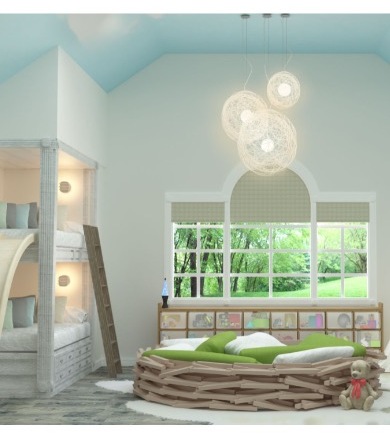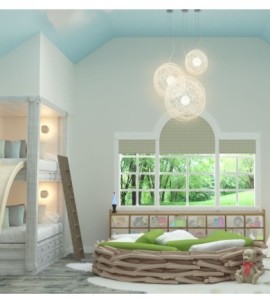Design spaces for a Child or Adult with Autism
By Deborah Rosemberg
Caption para la foto Sensory Kids Room
Usar la foto de Deborah de la edición antes pasada con su caption
Most of us have experienced what I refer to as “the square peg in a round hole” moment. It’s that uncomfortable feeling we get when we are completely out of sync with our surroundings or the people around us. To a person with Autism, this is not a temporary situation. Autism is a neurological disorder that impairs a person’s ability to communicate and relate to others. It’s associated with rigid routines and repetitive behavior. One in 45 children in this country alone are diagnosed with Autism and no cure has yet been found. Our fast-paced world is a constant struggle for this population. They have difficulty expressing their discomfort, which leads to tremendous frustration. In order to thrive and grow to their full potential, children with Autism, as do all of us, need to feel in control in an environment that is comforting and non-threatening.
I am a decorator and have been designing luxury homes and offices for nearly 12 years. I also design spaces for children and adults in the Autistic Spectrum, ADHD, Aspergers, Dyslexia and other sensory challenges.
As the mother of twin girls, I had always been intrigued by each of my daughter’s “unique emotional blueprints,” and how their environment altered their development and behavior. One of my daughters has sensory issues. She is sensitive to certain colors, sounds, surfaces and smells. She has taught me a lot about a persons sensory needs. I began incorporating these elements into my client’s spaces, specifically the ones with sensory and developmental issues. I call it “Design with Direction.”
When approaching the design of a space for a child or adult with Autism, think about your goals for the room. Every child is different including a child with Autism. Consider safety first. Reconsider items that have cords or strings, breakable mirrors etc. Furniture, especially larger, heavier pieces should be anchored to walls.”
The best design of a room is a space that addresses the child’s specific arousal level. Do they need a stimulating or calming environment? This will enable them to have the security to learn and function.”
Consider the following:
1. Bean bags, floor cushions, small tents for cocooning, rocking chairs, tunnels and swings are wonderful additions to the space.
2. Smell is the strongest sense in our body. It appears that children with Autism have a keen sense of smell. Use organic aromatherapy in the space to calm or stimulate.
3. White noise, such as the sound of a whirring fan, could sound like nails on a chalkboard to a child with Autism. Incorporate calming nature sounds such as waterfalls, the ocean, rain and birds chirping.
4. Studies have shown that children with Autism see the color red as fluorescent and appear calmer in pink and soft blue surroundings. Select paint colors that are relaxing and toxin free.
5. Research suggests that children with Autism might visually process their surrounding differently which could alter how they spatially interpret a room. Keep the space as clean and as clutter free as possible.
6. Add multisensory toys and products such as microphones, koosh balls and slinky’s to the space. Consider items that address gross and fine motor skill function and objects for pushing, pulling, rolling and hugging. Incorporate visually stimulating products such as clocks, wind chimes, crystals and toy fish tanks.
7. Select soft, diffused lighting. Choose ceiling fixtures that are covered with frosted glass, table lamps that don’t give off harsh light, and don’t forget outlet covers.
8. Many children with challenges are drawn to animals. Hang wall coverings and art that portray happy images and artwork of baby animals.
9. Many children with Autism appear to react painfully to light touch or tickling. Use blankets that are heavy and enveloping
10. Furnishings should be low to the ground. In place of a traditional desk and chair, consider a small coffee table with big pillows to sit on or a lap buddy.
11. In order for the child to learn while at play, store small toys and items in clear bins with labels and graphics to match.
12. Secure a cork board to the wall for family photos and child’s art. Change the artwork frequently. Use putty in place of thumbtacks.
13. Transitioning, or going from one task to the next can be challenging for a child with Autism. So, hang a transition chart to guide them.
14. Regardless of the child’s age, treat the space as if it’s being designed for a young child, assuring safety and unexpected dangers. Consider an upholstered, low platform bed and a snug mattress, preferably organic.
Within all of us lies the ability to tune in or tune out sensory information. However for a child with Autism, this is a constant challenge; one that creates a state of imbalance. It is fundamental for all children to first trust their environment so that they can explore it, interact with it, learn from it and thrive.”
Deborah Rosenberg of www.DiMareDesign.com and www.Ddigz.com can be reached at [email protected] or 786-629-9581.



 Contact Us
Contact Us